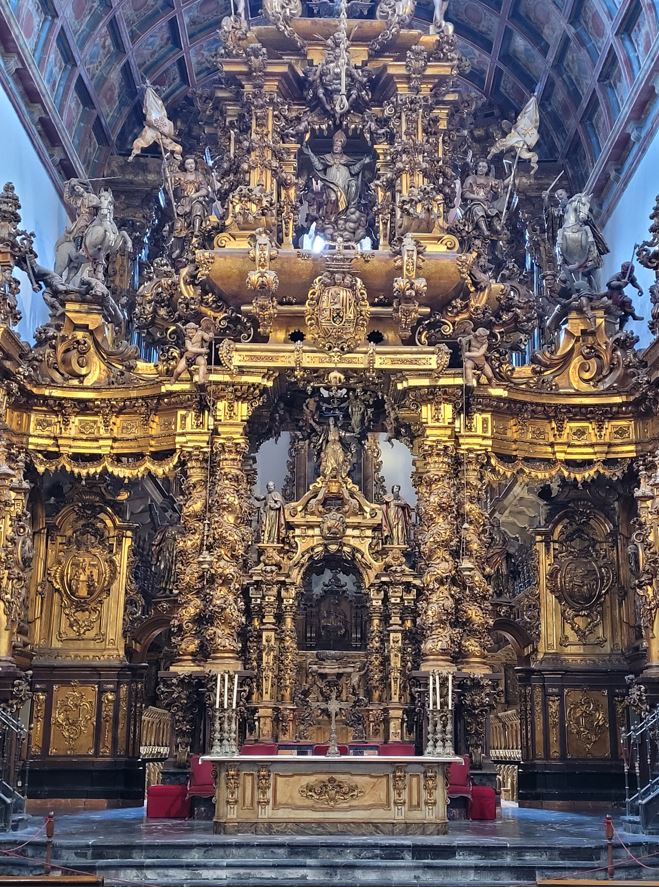C’est l’ancienne église du Monastère San-Martino-Pinario. Datant de la fin du XVIe ou du début du XVIIe siècle, bâtie sur les plans de l’architecte Mateo Lopez, elle donne sur la praza de San Martino et est aujourd’hui un musée. L’église est visitable au rez-de-chaussée, le premier étage étant consacré à une présentation du mobilier liturgique, le deuxième étage étant partagé entre le mobilier liturgique et un museum d’histoire naturelle.
L’église conserve un retable avec une statue d’une Charité de saint Martin au sommet, un saint Martin en évêque au centre, un bas-relief de chaque côté évoquant la résurrection d’un enfant pour l’un, et le miracle du pin pour l’autre. Enfin, nous trouvons dans les stalles du premier et du deuxième étages un bas-relief de la Charité. L’église est visitable au rez-de-chaussée, le premier étage étant consacré à une présentation du mobilier liturgique, comme le deuxième, qui se partage avec un muséum d’histoire naturelle.






It is the old church of the San-Martino-Pinario Monastery. Dating from the end of the 16th or the beginning of the 17th century, built on the plans of the architect Mateo Lopez, it overlooks the Praza de San Martino and is now a museum. The church can be visited on the ground floor, the first floor being devoted to a presentation of liturgical furniture, the second floor being shared between liturgical furniture and a natural history museum.
The church retains an altarpiece with a statue of a Charity of Saint Martin at the top, a Saint Martin as a bishop in the center, a bas-relief on each side evoking the resurrection of a child for one, and the miracle of pine for each other. Finally, we find in the stalls of the first and second floors a bas-relief of Charity. The church can be visited on the ground floor, the first floor being devoted to a presentation of liturgical furniture, like the second, which is shared with a natural history museum.

 "/>
"/>